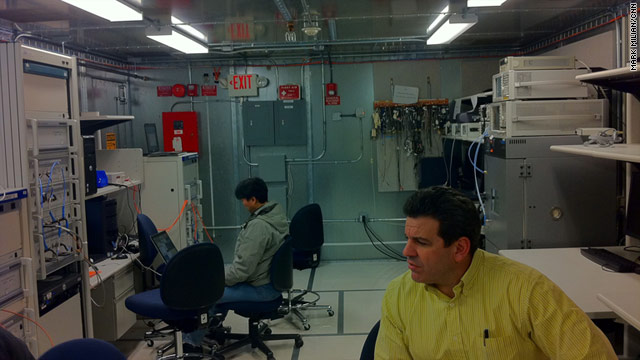With the expansion of IoT, many device manufacturers are rushing to embed cellular connectivity into their solutions. Cellular module manufacturers have made the process of embedding a certified modem simple with single chip designs. This enables OEM’s to reduce the build cost, minimize the use of engineering resources and shorten the time for a new device to enter the market.
These branded cellular modem modules are FCC certified and in the US, there are specific modules built to work on the major cellular carriers AT&T, Sprint, T-Mobile, and Verizon.
Certified or Not?

Verizon Test Lab – Credit CNN
There are already many benefits to implementing a device with embedded cellular. Users should be careful when selecting a cellular enabled device that is being marketed as “certified”. In reality, the cellular module itself may have gone through the certification process, but when the module is embedded it does not automatically transfer that certification to the complete solution. The device itself needs to be tested again to ensure it works in conjunction with the cellular module.
End to End Device Testing?
Unfortunately, the testing process is just as complicated, and varies between cellular carriers. While some carriers just require the use of certified modules, others require an extensive end-to-end device testing of the entire solution. These tests are very thorough to ensure the solution being implemented fits the standards of the carrier and that it works properly while connected to the network. In rare instances devices that are not properly certified could be disconnected from the network. Below are just a few of the carrier requirements
- All devices must have undergone and pass FCC testing to ensure any conducted and radiated emissions are within legal limits
- Device certification involves a series of standardized tests that verify that the device operates properly and within acceptable parameters while operating on the carriers’ network. The testing is normally performed at approved independent test labs and can involve RF emissions as well as network performance testing.
- Once approved, the device has been deemed to meet carriers’ current testing standards and is approved for launch on their network
- Requirements can change after the approval process. For example, remote over the air (OTA) update capabilities are required by some carriers. If a device is not properly updated, a carrier could block network access.
- Some carriers require that the device has completed specific testing before being activated on their network.
Evaluating Your Options
While there are many cellular solutions on the market, network administrators must do their due diligence during the evaluation process before rolling out onto their network infrastructure. This is critical in an out-of-band solution where the cellular connection is primarily used during a failure.
You should understand which cellular module is embedded in the device, to ensure it is compatible with your cellular carrier. Some resources are available on the carrier’s website, where they may publish a list of devices that have gone through the testing process.
https://opendevelopment.verizonwireless.com/device-showcase
All cellular enabled Opengear solutions are using certified modules and are carrier certified for VZW, AT&T and Sprint.


